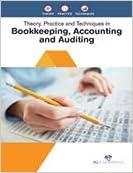Question
1.A company has outstanding 9 million shares of $2 par value common stock and 1 million shares of $4 par value preferred stock. The preferred
1.A company has outstanding 9 million shares of $2 par value common stock and 1 million shares of $4 par value preferred stock. The preferred stock has an 8% dividend rate. The company declares $600,000 in total dividends for the year. Which of the following is correct if dividends in arrears are $30,000?
Preferred stockholders will receive $350,000; common stockholders will receive $250,000.
Preferred stockholders will receive $60,000; common stockholders will receive $540,000.
Preferred stockholders will receive $320,000; common stockholders will receive $280,000.
Preferred stockholders will receive $90,000; common stockholders will receive $510,000.
2.The stockholders' equity section of the balance sheet includes all of the following except:
Retained Earnings.
Contributed Capital.
Treasury Stock.
Dividends.
3.When a company uses the direct method to determine the cash flows from operating activities, cash flows from operating activities will:
be identical to the amount reported using the indirect method.
be larger if there is a net cash inflow and smaller if there is a net cash outflow compared to the amount reported using the indirect method.
always be larger than the amount reported using the indirect method.
be larger if there is a net cash outflow and smaller if there is a net cash inflow compared to the amount reported using the indirect method.
4.Which of the following would be reported on the statement of cash flows, using the direct method, as a cash flow from operating activities?
Payment of income taxes
Payment of cash dividends
Purchase of a building
Purchase of treasury stock
5.Which of the following are used to determine cash flows from financing activities?
Short-term debt, Accrued Liabilities, Common Stock, and Notes Payable
Long-term debt, Common Stock, and Retained Earnings
Short-term debt, Accrued Liabilities, Retained Earnings, and Bonds Payable
Long-term debt, Notes Payable, Interest Expense, and Bonds Payable
6.Which of the following represent cash outflows from financing activities?
Distributing a stock dividend
Paying a bond's face value at maturity
Issuing long-term bonds at a discount
Paying interest on promissory notes
Step by Step Solution
There are 3 Steps involved in it
Step: 1

Get Instant Access to Expert-Tailored Solutions
See step-by-step solutions with expert insights and AI powered tools for academic success
Step: 2

Step: 3

Ace Your Homework with AI
Get the answers you need in no time with our AI-driven, step-by-step assistance
Get Started


